 |
King of Chemicals Manufacturers |
Specifications, Properties, Uses, SDS of Sodium Polystyrene Sulfonate or Sodium Polystyrene Sulphonate USP BP Ph Eur EP Grade Manufacturer Supplier Exporter Wholesale & Small Packs, CAS Number 25704-18-1 or 9003-59-2 or 9080-79-9. |
|
| King of Chemicals has several associated companies having accreditations like cGMP, GLP - FDA Approved Good Manufacturing Practice and Good Laboratory Practice of WHO standard, ISO-9001, ISO-14001, ISO/IEC 17025, ISO ISO-45000, HACCP, FSSC 220000, FSSAI, "REACH" Registered, Kosher & Halal Certified. e-CTD and DMF support can be made available if needed. We offer USP NF BP Ph Eur EP IP JP Analytical Reagent FCC Food Grade Chemicals & Nutraceuticals. | |
        |
|
Muby Chem Pvt. Ltd. is a several decades old group of companies, engaged in manufacturing, supplying, distributing, wholesale supplies of Sodium Polystyrene Sulfonate or Sodium Polystyrene Sulphonate for actual users, including retail or small pack supplies for research and development work.
We supply fine and speciality chemicals, pharmaceutical excipients, mineral fortifiers in chemically pure, analytical reagent grade, IP BP USP Ph Eur EP JP and other pharmaceutical grade monograph including FCC Food grade chemicals and Nutraceuticals at best prices. We and/or our associated units have all the facilities to supply as per cGMP standard observing good manufacturing practice and good laboratory practice. We can assure low microbial count and also offer a test certificate for the same. We maintain warehouses across USA, India, and UAE. Our group exports to USA, Canada, Mexico, Argentina, Brazil, Chile, Korea, Malaysia, Thailand, Indonesia, Europe, and several other parts of the world. We supply in wholesale container loads to small pack of few grams. Solid products may be specified for it size and shape as desired by the buyer.
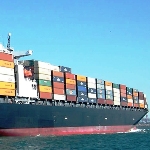

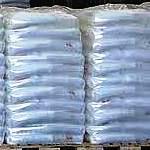
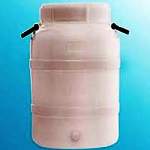
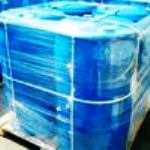
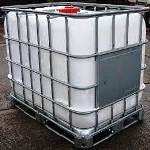
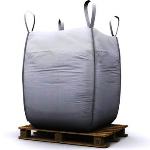
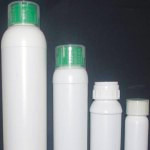
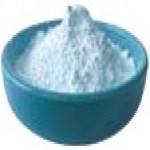
Sodium Polystyrene Sulfonate or Sodium Polystyrene Sulphonate CAS Number 25704-18-1 or 9003-59-2 or 9080-79-9
For Properties Specifications Uses of Sodium Polystyrene Sulfonate or Sodium Polystyrene Sulphonate Click Properties, Specifications, Uses, Price, Process of Sodium Polystyrene Sulfonate or Sodium Polystyrene Sulphonate Manufacturer.
For For SDS MSDS Sheet of Sodium Polystyrene Sulfonate or Sodium Polystyrene Sulphonate Click SDS Safety Data Sheet MSDS Sheet of Sodium Polystyrene Sulfonate or Sodium Polystyrene Sulphonate Manufacturer.
The Properties, Specifications, Monograph and Uses of Sodium Polystyrene Sulfonate or Sodium Polystyrene Sulphonate:
Polystyrene sulfonates are polymers derived from polystyrene by the addition of sulfonate functional groups. They are widely used as ion-exchange resins to remove ions such as potassium, calcium, and sodium from solutions in technical or medical applications.
Sodium polystyrene sulfonate is a cation-exchange resin. Sodium polystyrene sulfonate is also used to treat hyperkalemia (increased amounts of potassium in the body). Sodium polystyrene sulfonate is in a class of medications called potassium-removing agents. It works by removing excess potassium from the body.
Sodium Polystyrene Sulfonate Suspension USP Grade
Sodium Polystyrene Sulfonate Suspension is a suspension of Sodium Polystyrene Sulfonate in an aqueous vehicle that may contain suitable suspending or stabilizing agents. It exchanges not less than 110 mg and not more than 135 mg of potassium for each g of the labeled amount of sodium polystyrene sulfonate.
Packaging and storage: Preserve in well-closed containers, protected from freezing and from excessive heat.
Microbial limits: Its total aerobic microbial count does not exceed 100 cfu per mL, its total combined molds and yeasts count does not exceed 100 cfu per mL, and it meets the requirements of the test for absence of Pseudomonas aeruginosa.
Sodium content: Not less than 9.4% and not more than 11.5%.
Potassium exchange capacity: (Anhydrous Basis) 110 mg/g to 135 mg/g.
Sodium Polystyrene Sulphonate BP Ph Eur Grade
Ph Eur
Action and use: Used in the treatment of hyperkalaemia.
DEFINITION
Polystyrene sulphonate resin prepared in the sodium form.
Exchange capacity: 2.8 mmol to 3.4 mmol of potassium per gram (dried substance).
Content: 9.4 per cent to 11.0 per cent of Na (dried substance).
CHARACTERS
Appearance: Almost white or light brown powder.
Solubility: Practically insoluble in water, in alcohol and in methylene chloride.
IDENTIFICATION
A. Infrared absorption spectrophotometry.
B. Suspend 0.1 g in water, add 2 ml of a 150 g/l solution of potassium carbonate, and heat to boiling. Allow to cool and filter. To the filtrate add 4 ml of potassium pyroantimonate solution and heat to boiling. Allow to cool in iced water and if necessary rub the inside of the test-tube with a glass rod. A dense white precipitate is formed.
TESTS
Styrene: To pass the test by liquid chromatography (1 ppm).
Calcium: Maximum 0.10 per cent.
Potassium: Maximum 0.10 per cent.
Heavy metals: Maximum 10 ppm.
Loss on drying: Maximum 7.0 per cent, determined on 1.000 g by drying in an oven at 105C.
Microbial contamination: Not more than 100 enterobacteria and certain other gram-negative bacteria per gram.
Sodium: To pass the test by atomic emission spectrometry
Exchange capacity: To pass the test by atomic emission spectrometry.
We also manufacture Sodium Polystyrene Sulphonate or Sodium Polystyrene SulFonate EP Grade.
The MSDS-SDS Hazard Statement of Sodium Polystyrene Sulfonate or Sodium Polystyrene Sulphonate:
Sodium Polystyrene Sulfonate or Sodium Polystyrene Sulphonate SDS, Safety Data Sheet
MSDS Sheet, Material Safety Data Sheet 10-Feb-25
Section 1: Chemical Product and Company Identification
Product Name & Other Names: Sodium Polystyrene Sulfonate or Sodium Polystyrene Sulphonate.
CAS #: 25704-18-1 also reported are 9003-59-2 & 9080-79-9
Relevant uses and uses advised against (if any): Industrial use only.
Supplier: As per letterhead.
Section 2: Hazards Identification
GHS, Globally Harmonized System Classification in accordance with 29 CFR 1910
Classification according to Regulation (EC) No 1272/2008
Not a hazardous substance or mixture according to Regulation (EC) No. 1272/2008.
This substance is not classified as dangerous according to Directive 67/548/EEC.
Labeling according to GHS & Regulation (EC) No 1272/2008
GHS Label Elements NONE |
Signal Word: None
Precautionary statements:
P261: Avoid breathing dust/fume/gas/mist/vapors/spray.
P262: Do not get in eyes, on skin, or on clothing.
P281: Use personal protective equipment as required.
P302+P352: IF ON SKIN: Wash with plenty of soap and water.
P304+P340: IF INHALED: Remove victim to fresh air and keep at rest in a position comfortable for breathing.
P305+P351+P338: IF IN EYES: Rinse cautiously with water for several minutes. Remove contact lenses, if present and easy to do. Continue rinsing.
P337+313: If eye irritation persists get medical advice/attention.
Section 3: Composition and Information on Ingredients
Product Name & Other Names: Sodium Polystyrene Sulfonate or Sodium Polystyrene Sulphonate.
CAS #: 25704-18-1 also reported are 9003-59-2 & 9080-79-9.
Section 4: First Aid Measures
Always seek medical advice after the first aid treatment.
Skin: Wash exposed area with soap and water.
Eyes: Wash eyes with plenty of water for at least 15 minutes, lifting lids occasionally. Seek Medical Aid.
Inhalation: Remove to fresh air. If not breathing, give artificial respiration. If breathing is difficult, give oxygen.
Ingestion: If swallowed, induce vomiting immediately after giving two glasses of water. Never give anything by mouth to an unconscious person.
Section 5: Fire and Explosion Data
Flammability of the Product: Non-flammable.
Products of Combustion: Sodium oxide with oxides of sulfur, carbon, and fumes.
Extinguisher Media: Use media suitable to extinguish surrounding fire. Use alcohol-resistant foam, dry chemical, or carbon dioxide.
Special Information: In the event of a fire, wear full protective clothing and NIOSH-approved self-contained breathing apparatus with full face piece operated in the pressure demand or other positive pressure mode.
Section 6: Accidental Release Measures
Personal precautions, protective equipment, and emergency procedures: Avoid breathing dust/fumes/gas/mist/vapors/spray. Use individual protective equipment (waterproof boots, suitable protective clothing, safety glasses, etc.).
Environmental precautions: Do not let the product enter drains, soil or water sources.
Methods and materials used for containment Cleanup procedures and Storage:
Small Spill: Use appropriate tools to put the spilled solid in a convenient waste disposal container.
Large Spill: Contain spilled material. Use a shovel to put the material into a convenient waste disposal container.
Section 7: Handling and Storage
Precautions for safe handling: Apply according to good manufacturing and industrial hygiene practices. Ensure proper ventilation. Wash thoroughly after handling. Do not drink, eat, or smoke while handling. Avoid contact with skin, eyes, and clothing. Minimize dust generation. Avoid breathing dust/fumes/gas/mist/vapors/spray. Keep container tightly closed. Avoid ingestion and inhalation. Use individual protective equipment (waterproof boots, suitable protective clothing, safety glasses, etc.).
Conditions for safe storage, including any incompatibilities: Store in cool, dry, and ventilated area away from heat sources and protected from sunlight in tightly closed original container. Keep air contact to a minimum. Do not leave the material container open. Store protected from heat, sparks and ignition sources and incompatible materials. Avoid contact with skin and eyes. Avoid inhalation of dust/mist/vapor. Do not store with incompatible materials like incompatibles, oxidizing agents, acids. Keep in original containers and avoid contact with moisture.
Section 8: Exposure Controls/Personal Protection
Exposure Guidelines: Not established.
Engineering Controls: Use process enclosures, local exhaust ventilation, or other engineering controls to keep airborne levels low.
Ventilation System: A system of local and/or general exhaust is recommended to keep employee exposures as low as possible. Local exhaust ventilation is generally preferred because it can control the emissions of the contaminant at its source, preventing dispersion of it into the general work area.
Personal Respirators (NIOSH Approved): For conditions of use where exposure to dust or mist is apparent and engineering controls are not feasible, a particulate respirator may be worn.
Skin Protection: Wear protective gloves and clean body-covering clothing.
Eye Protection: Use chemical safety goggles and/or full face shield where dusting or splashing of solutions is possible. Maintain eye wash fountain and quick-drench facilities in work area.
Other Control Measures: Maintain good housekeeping in work area. Handle in accordance with good industrial hygiene and safety practice.
Section 9: Physical and Chemical Properties
Physical state and appearance: Cream to light brown solid.
Odor: No information found.
Odor threshold: No information found.
pH: No information found.
Relative density: 0.8
Melting Point: 450C.
Initial boiling point and boiling range: No information found.
Flash point: No information found.
Auto-ignition temperature: No information found.
Decomposition temperature: No information found.
Upper/lower flammability or explosive limits: No information found.
Vapor pressure: No information found.
Vapor density: No information found.
Evaporation rate: No information found.
Flammability (solid, gas): No information found.
Partition coefficient: n-octanol/water: No information found.
Solubility: Soluble in water.
Viscosity: No information found.
Section 10: Stability and Reactivity Data
Stability: Sodium Polystyrene Sulfonate is stable.
Conditions of Instability: Incompatible materials
Incompatibility with various substances: Oxidizing agents, Heat and Dust formation.
Corrosivity: Non-corrosive in presence of glass.
Hazardous Decomposition Products: Sodium oxide with oxides of sulfur, carbon and fumes.
Polymerization: Will not occur.
Section 11: Toxicological Information
Toxicity to Animals: LD50 (Oral) Rat >8000 mg/kg. LC50 (Inhalation) Rat - 4 h - 2,600 mg/m3.
Carcinogenicity: No component of this product present at levels greater than or equal to 0.1% is identified as probable, possible or confirmed human carcinogen by IARC, NTP & ACGIH.
Mutagenic Effects: No information found.
Developmental Toxicity: No information found.
Reproductive Effects: No information found.
Section 12: Ecological Information
Ecotoxicity: The product is not expected to be harmful to marine life.
Persistence and Degradability: Soluble in water. Persistence is unlikely as per information available.
Mobility: Likely to be mobile due to water solubility.
Bioaccumulation/ Accumulation: No information found.
Results of PBT and vPvB assessment: No information found for assessment.
Products of Biodegradation: Possibly hazardous short-term degradation products are not likely. However, long term degradation products may arise.
Section 13: Disposal Considerations
Waste Disposal: Waste must be disposed of in accordance with federal, state, and local environmental control regulations.
Section 14: Transport Information
DOT USA, TDG Canada & ADR/RID Europe: Not regulated.
IMDG/IMO: Not regulated.
IATA: Not regulated.
Section 15: Other Regulatory Information
USA Regulations
California Prop. 65 Components: Not listed.
Disclaimer:
**************************
Our company provides this MSDS sheet in good faith but makes no representation as to its comprehensiveness or accuracy. This SDS sheet is intended only as a guide to the appropriate precautionary handling of the material by a properly trained person using this product. The above information has been compiled from various sources and has the possibility of discrepancy and being out-dated information. Individuals receiving the information must exercise their independent judgment and do further search in determining its appropriateness for a particular purpose. In no case shall our company be liable to loss or damages by the product user.
**************************

Sodium Polystyrene Sulfonate or Sodium Polystyrene Sulphonate Manufacturers, Suppliers, Exporters, Wholesalers:
King of Chemicals manufacturers

Plot No. 2900/46&47 + 2900/163to167, GIDC, Ankleshwar, Dist. Bharuch, India
India, USA, UAE
TEL: (Office) 91-22-23774610, 91-22-23723564
e-mail: info@kingofchemicals.com
Copyright and Usual Disclaimer is Applicable --- April 6, 2025
If I give you “My Word” Nobody can undo it.
If I sign an “Agreement” my Lawyer will undo it
Our products are for industrial and laboratory use only. The user must test the material before use. We are not dispensing chemists or druggist and do not offer over the counter type (OTC) products for medical use by individuals.
We and our associates manufacture pure chemicals surpassing Monograph Specifications of Analytical Reagent Standards, British & European Pharmacopoeia BP Ph Eur EP Standard, US Pharmacopoeia USP NF Standard, Indian Pharmacopoeia IP Standard, Japan Pharmacopoeia JP Standard, FCC Food Grade Standard. |
|